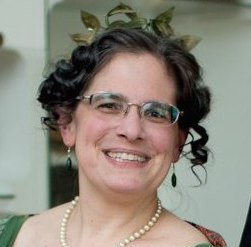By the end of the 19th century, quite a number of quadrilles were being published that didn’t follow the earlier form of having multiple separate figures. Although this dance does have two distinct dance parts, the original instructions (which may be seen here) are clear that they should be treated as one long figure:
Play an ordinary waltz and do not stop between the numbers.
The source of the dance is The Prompter’s Handbook by J.A. French, published in Boston in 1893. I haven’t looked for any other sources for this particular set of figures – it’s a trivial little quadrille which I reconstructed in order to have a late-evening set dance that was easy and provided an excuse for plenty of waltzing.
Music selection
There are 144 bars of dance instructions given plus the standard 19th-century 8 bars of introduction (used to bow to partners and then to corners), and at the end the couples are simply to waltz freely around the room until the end of the music. Since the dance is structured in 24-bar phrases, any of the following lengths/structures of tunes could be used:
24bx6 (no 8b for intro, no extra waltzing)
24bx7 (8b intro, 16b extra waltzing at end)
48bx3 (no 8b for intro, no extra waltzing)
48bx4 (8b for intro, 40b extra waltzing)
Keep in mind that any extra waltzing at the end is in addition to the previous 16b of waltzing with the same person when thinking how nice it would be to have even more music for waltzing!
A piece with a 32 bar structure played five times will also work, and allow for an 8b intro and an extra 8b of waltzing at the end, but the figures will not line up well with the music, which is likely to be annoying to the dancers.
Of note in the figures:
- The gentlemen’s grand chain is a reverse of the ladies’ grand chain: all four gentlemen form a moulinet of left hands and go around halfway, then turn the opposite lady by the right hand. This figure is normally called a “double chain” rather than a grand chain, and I’ve kept that standard usage in the reconstruction below.
- The “passes” in the second part of the dance are an old figure, used at least as far back as 1820 in the country dance form known as “Spanish Dances” or “Danse Espagnole”. They still occur in some versions of the surviving Spanish Dance all the way through the 19th century, as well as in non-waltz quadrilles. Ladies should take care to use all of the time given to move to their new place.
On to the actual dance:
Waltz Quadrille
8b Introduction – honors to partner and then to corner
4b All four ladies chain (ladies’ double chain) halfway (right hand moulinet, turn by left with opposite gentleman)
8b Waltz round with opposite
12b Repeat ladies’ double chain and waltz round with partner
4b All four gentlemen chain (gents’ double chain) halfway (left hand moulinet, turn by right with opposite lady)
8b Waltz round with opposite
12b Repeat gentlemen’s double chain and waltz round with partner
4b All take hands and go forward and back (into the center and out)
4b Pass each lady from the gentleman’s left to his right
16b All waltz twice round with new partners
24b Repeat above
24b Repeat above
24b Repeat above, now waltzing with original partner; may break the set and waltz around the room
Continue to waltz with partner anywhere in room until music ends.
Special thanks to my amiable quadrille guinea pigs: Al, Jan, Marc, Keira, Lynn, Irene, Alex, and Franzo.


Leave a Reply